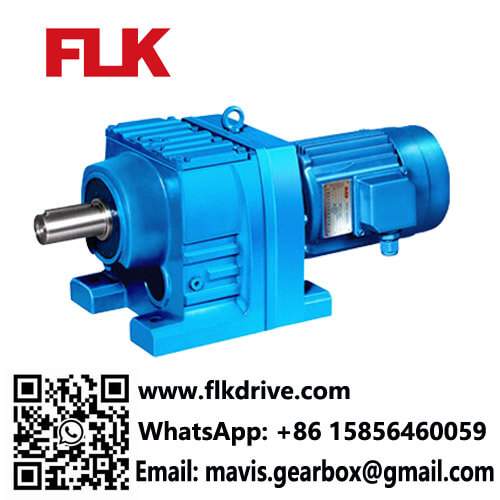Speed reducers are a very important part of mechanical power transmission systems. There are several different types available, each with certain features. Installing the wrong gear reducer into an application can be disastrous. The first step to choosing a gear reducer is to know what torque and speed are required as well as the most suitable motor to use. Next, if a gear reducer is needed, you select the proper type and ratio.
Peki hız düşürücü nedir? Genellikle faydaları, hızı azaltabilmesi ve torku artırabilmesidir. Hız azaltma miktarı kullanılan motorun tipine bağlı olacaktır. Örneğin, bir motorun düşük hızlarda (1000 rpm kadar düşük) çalışması için dişli redüktörüne ihtiyacı olmayabilirken, diğerinin herhangi bir hızda çalışması gerekebilir.
For speed reducers, the gear ratio is calculated using the equation below. I is the gear ratio, and N1 is the speed of the motor and N2 is the output speed of the gear reducer.
I = N1 / N2
Speed reducers multiply the torque output of a motor. For this reason, a smaller, less expensive motor with a gear reducer may be the right decision for your application than a larger motor without one. To calculate the required gearbox ratio when torque multiplication is needed, use this equation: I is the gear ratio, T is torque, P1 is motor power, N1 is the motor speed and μ is efficiency.
I = T /9550 / P1 * N1 / μ
Another function of gear reducers is reducing the reflected load inertia to the motor by a factor of the square of the gear’s ratio. For most motion applications, the reduction of reflected inertia from motors is ideal. This is especially true for high-performance applications but is applicable for any motion application. Rather than only considering the gear’s ratio, you should also take into account the inertia of the load and the motor. To achieve perfect inertia matching, take the square root of the ratio of motor inertia to load inertia.
Uygulamanız için gereken hızı ve dişli oranını hesaplamak için istenen çıkış hızını ve torkunu bilmeniz gerekir. Bu iki bilgiyi aldıktan sonra aşağıdaki formülü kullanabilirsiniz:
Çıkış Hızı (RPM) = Giriş Hızı (RPM) / Dişli Oranı
Nerede:
- Çıkış Hızı (RPM), çıkış milinin istenen hızıdır
- Giriş Hızı (RPM), genellikle motor tarafından belirlenen giriş milinin hızıdır
- Dişli Oranı, çıkış hızının dişli kutusunun giriş hızına oranıdır
Örneğin, 100 RPM çıkış hızı ve 100 lb-ft çıkış torku gerektiren bir yükünüz olduğunu varsayalım. Motorunuzun 1750 RPM giriş hızı ve 50 lb-ft giriş torku sağladığını varsayalım. Bu durumda gerekli dişli oranını ve çıkış hızını aşağıdaki şekilde hesaplayabilirsiniz:
Dişli Oranı = Giriş Torku / Çıkış Torku Dişli Oranı = 50/100 Dişli Oranı = 0,5
Çıkış Hızı (RPM) = Giriş Hızı (RPM) / Dişli Oranı Çıkış Hızı (RPM) = 1750 / 0,5 Çıkış Hızı (RPM) = 3500
Bu nedenle gerekli dişli oranı 0,5 ve çıkış hızı 3500 RPM'dir. Bu hesaplamaların tahminler sağladığını ve motor verimliliği ve çalışma ortamı gibi faktörlere göre değişebileceğini unutmamak önemlidir. Uygulamanız için doğru redüktörlü motoru seçerken her zaman bir redüktörlü motor uzmanına danışmanız önerilir.
About FLK Drive Transmission
At FLK Drive Transmission, we work hand-in-hand with our customers to ensure that their industrial gearboxes, speed reducers, and accessories remain operational for years to come. Many of our products have been in high-speed and harsh environments for years. Clients make the switch to FLK Drive to experience that durability and decrease the amount of unscheduled downtime and maintenance in their facility. We ensure that every unit we design or repair leaves our factory quickly to keep your application up and running. Please call us at +86 15856460059 or contact us by email to receive a quote for your facility or information about our industrial gearboxes services. We will be glad to tell you more about our products and provide best service for you.





